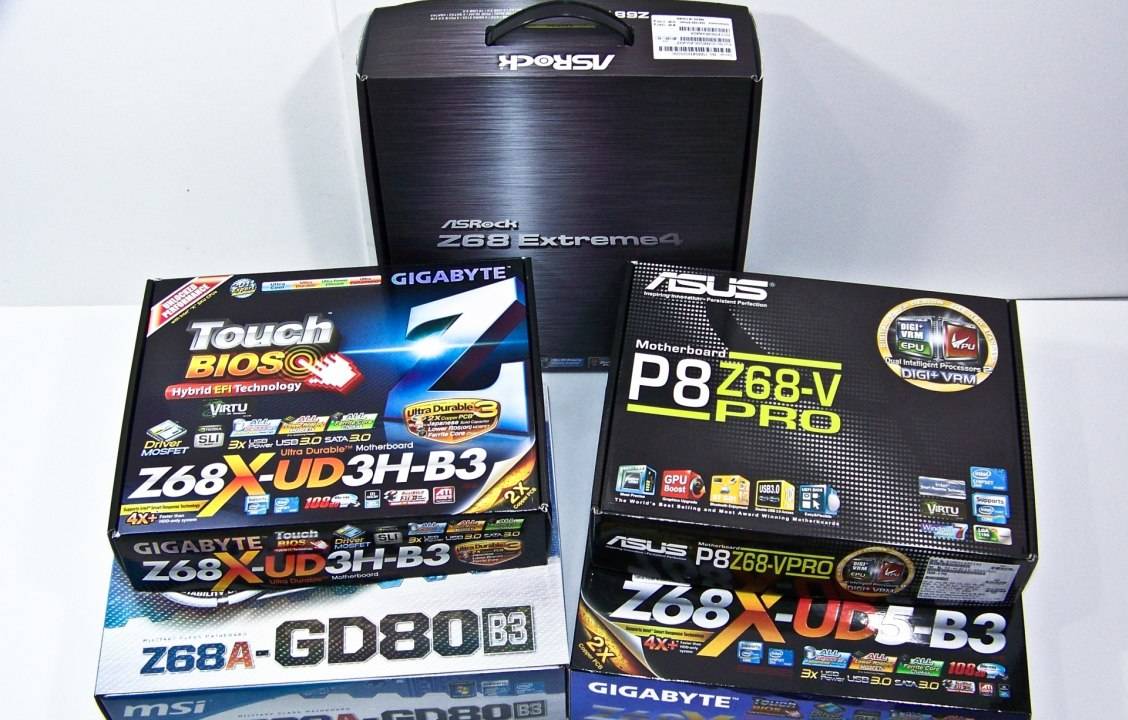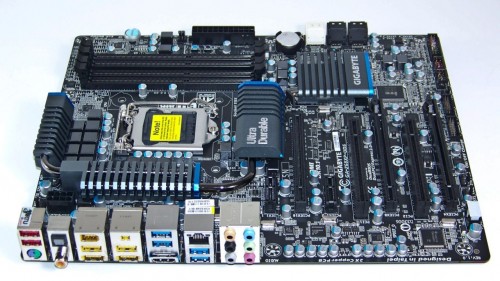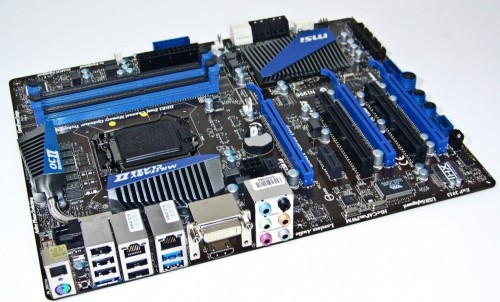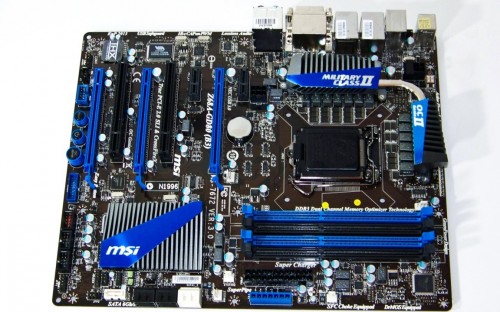GIGABYTE GA-Z68XP-UD5-B3 Motherboard
The original UD5 that we featured in the Z68 launch article didn’t have any video out ports. But, with many people feeling a loss without access to the video and Virtu, GIGABYTE added an HDMI port renaming the board to the Z68XP-UD5. With 20-Phase VRM, the platform is poised to offer better overclocking than its “H” siblings. You’ll definitely like the look if you take pride in your system. We go through it in detail in the unboxing video below.
[youtube=http://www.youtube.com/watch?v=t6EAo5L5E74]
Overall, the UD5 layout is also very clean and similar to the UD3H. It’s very easy to get to all the ports including the special USB ports which are at the bottom of the board now. The platform has larger heat sinks and pipes to accommodate higher VRM output to the CPU from overclocking. While both the UD3H and UD5 have Cloud OC for overclocking using your smartphone or tablet and Hotekey OC for overclocking, the UD5 stands to achieve the highest extended overclocks with better stability. You’ll find the power and reset buttons hiding behind the 24-pin power connector. Since, most users will be using a case, this is a pretty minor issue.
While you can still find the original GA-Z68X-UD5 for $239.99 US, the revised Z68XP-UD5 cost increased to $269.99 US after adding Virtu and an HDMI port. At this increased price, consumers are going to have to heavily consider the competition at the original price. Still, GIGABYTE’s quality has secured many happy fans willing to pay a little extra for the sexy black PCB and a more traditional BIOS experience.
MSI Z68A-GD80 Motherboard
The GD80 is a more aggressive model and seems to be MSI’s best bang for buck overclocking choice. We’ve seen the P67A-GD80 sibling get close to 5GHz with moderate tweaks. The VRM engineers appear to be doing what it takes to get these boards noticed in all facets of performance. The Military Class II theme returns featuring OC Genie II for super easy 4GHz+ overclocking. Let’s go to the unboxing video below for a closer look and overview.
[youtube=http://www.youtube.com/watch?v=IeYiEVHiCIA]
The ClickBIOS II is a very easy BIOS to navigate and doesn’t take a pro to figure out the performance sweet spots. There are options for automated overclocking similar to the ASUS P8Z68-V Pro right down to the frequency selections if you’re using a Core i7-2600K. MSI really worked on cleaning up the software for the Windows environment. Most of what you can do in the BIOS can also be done in Windows.
We found that the GD80 has a very low profile set of components except for the VRM heat pipe sinks around the CPU socket. The new Hi-C caps (flat components next to the socket) sit very low and out of the way. Users should find all the sockets near the edges of the motherboard including the special front panel USB header. A single 6-pin PCI Express power port oddly crowds the top PCIEx1 slot. Other than that tiny issue, the GD80 is a very cool board priced in at $229.99 US which also includes Virtu. If we could get this board about $20 cheaper, we would really see it flying off the shelves.





